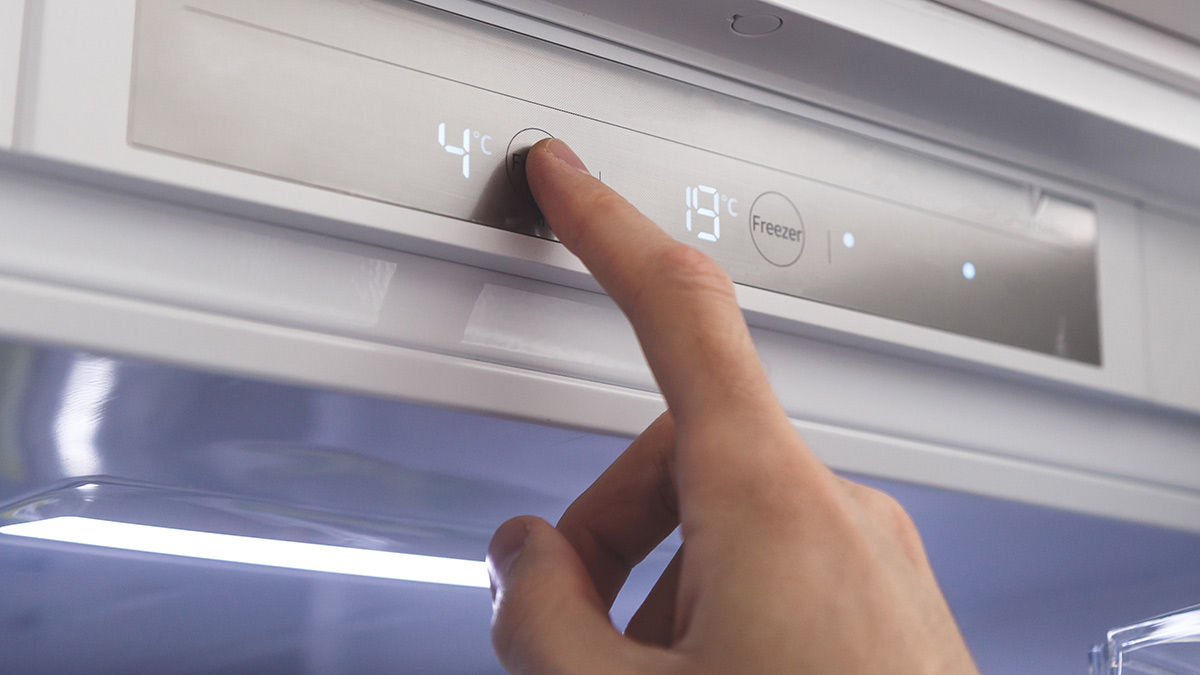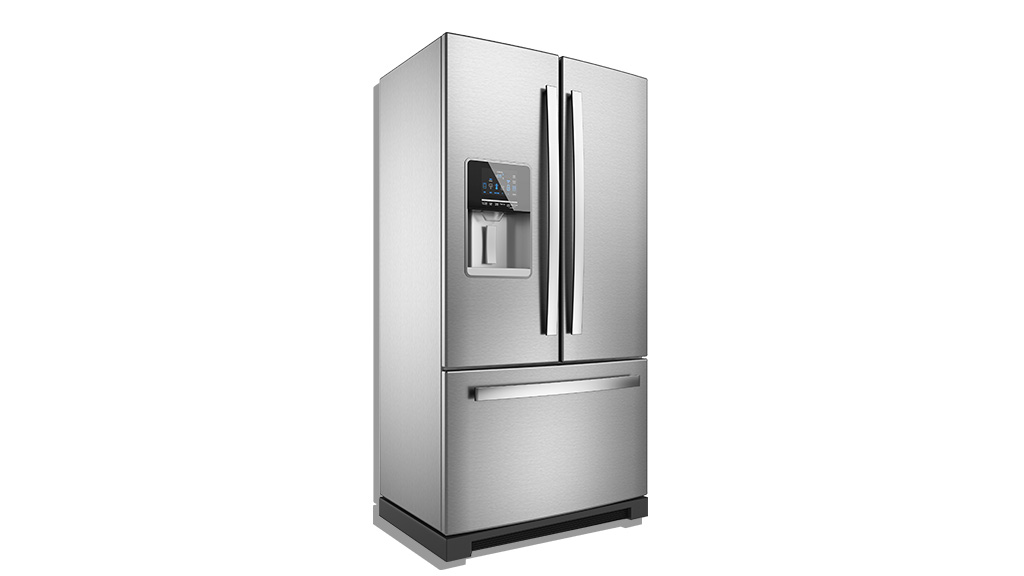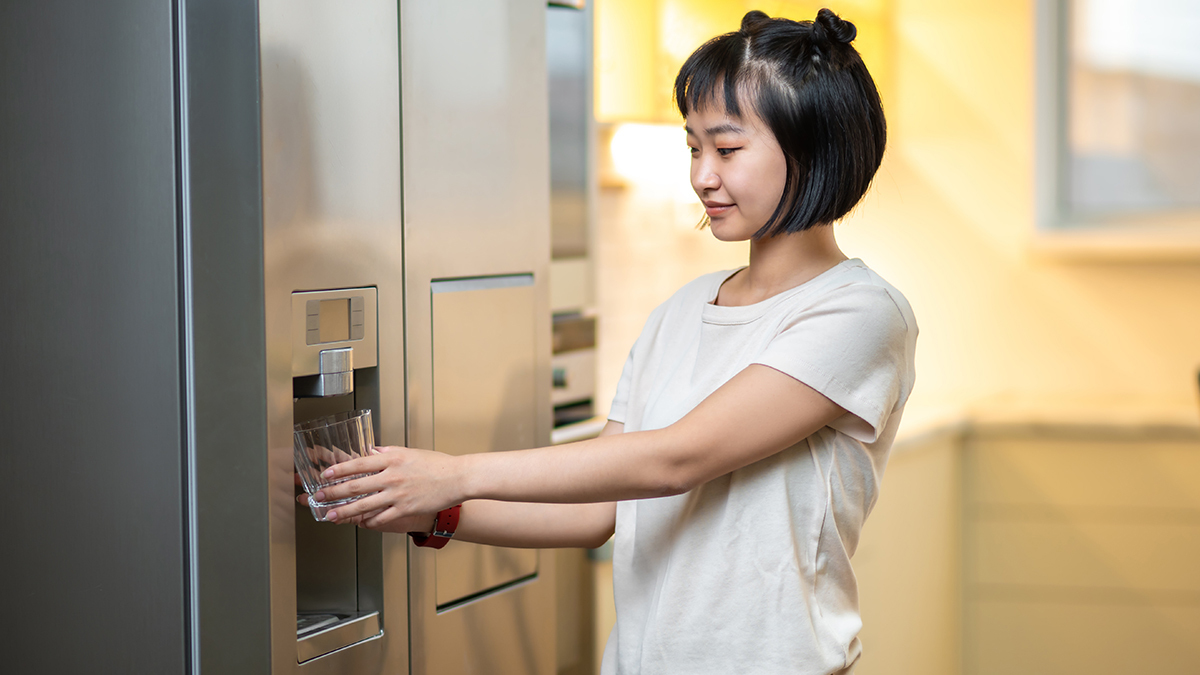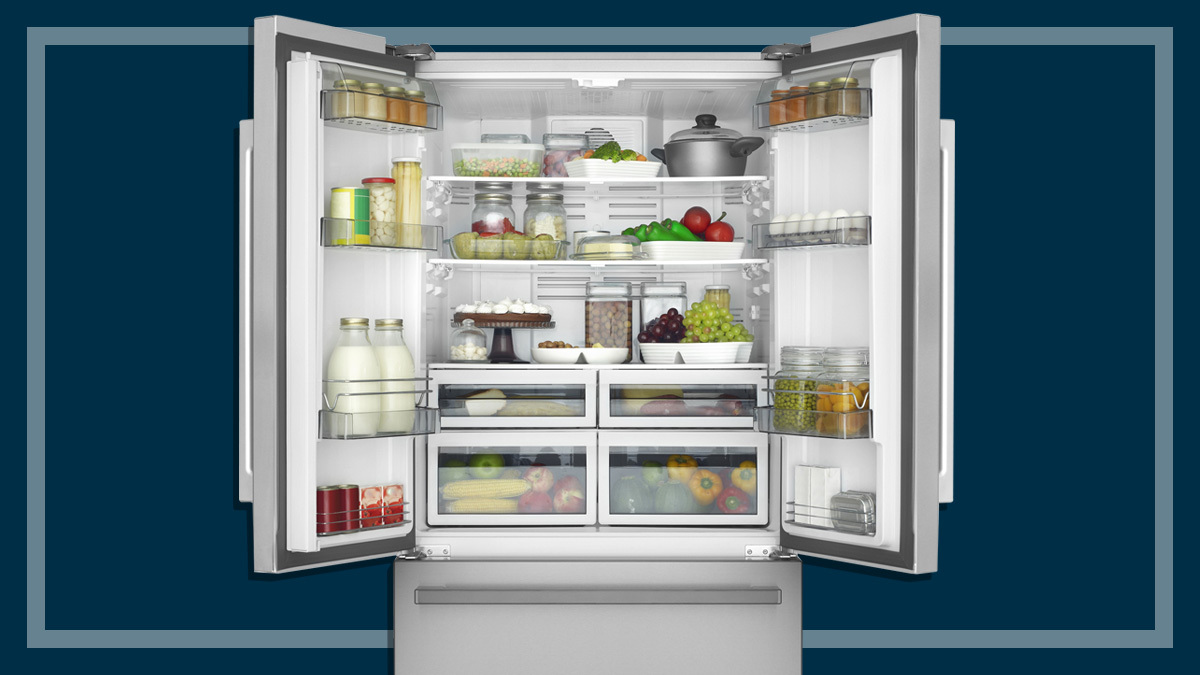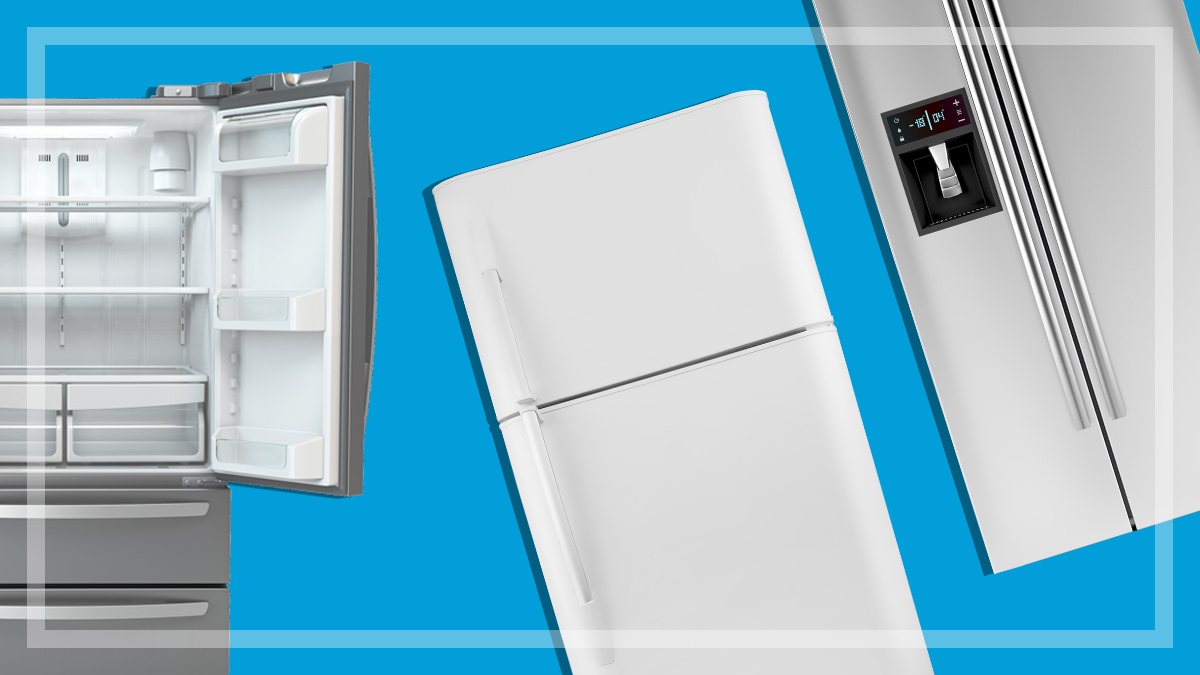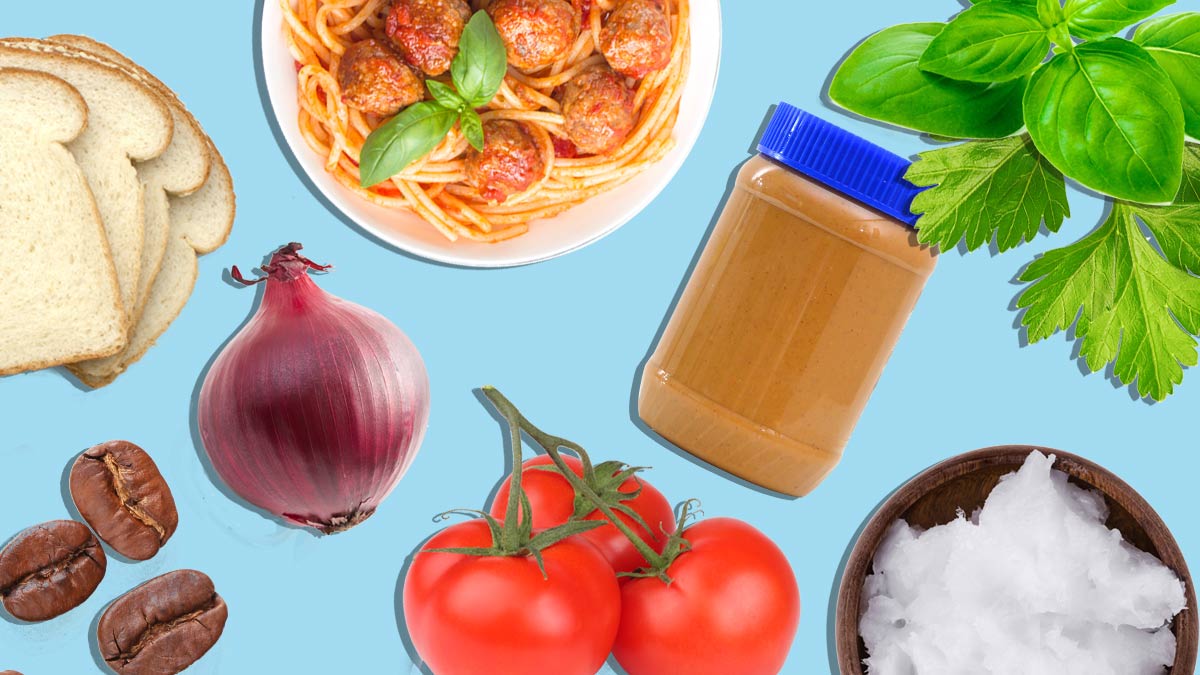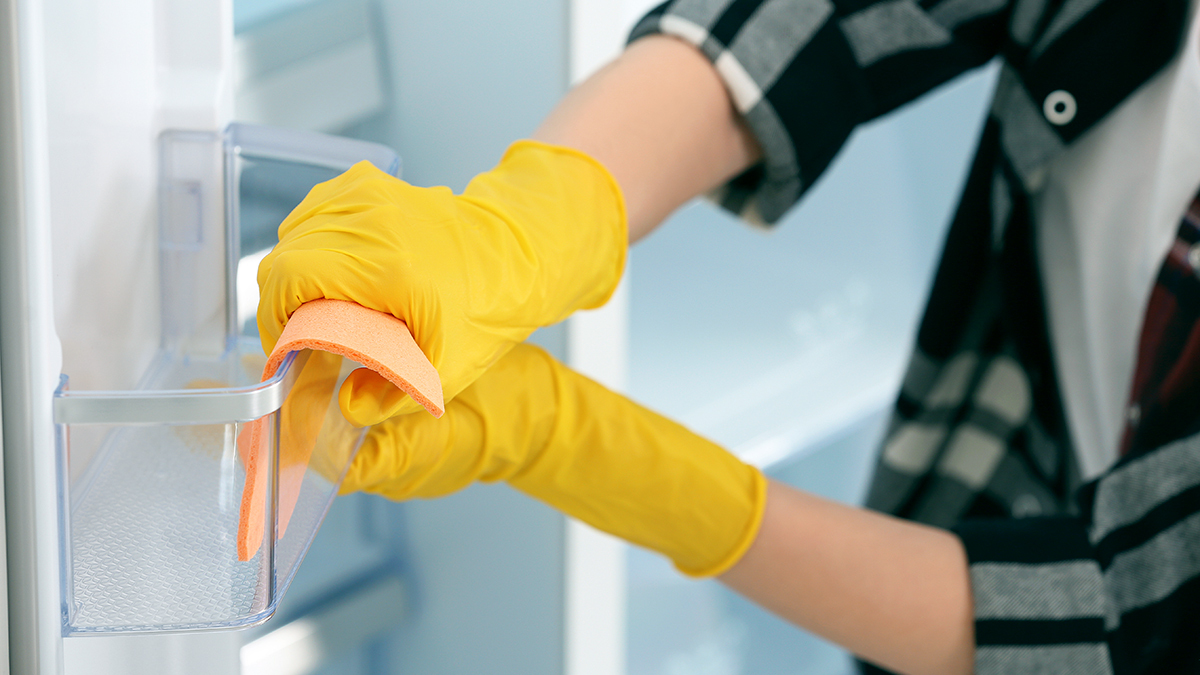What’s the best temperature for your fridge and freezer?
Is your fridge set to the optimum temperature? Our experts explain how to make sure you’re getting it right.
Last updated: 3 Jan 2025
It’s hardly the most exciting feature on your fridge, but tweaking your temperature dial can help you get the best performance out of your biggest kitchen appliance.
Keeping your fridge and freezer at just the right temperature can cut your electricity costs and make your food last longer. And storing food in the right location in (or out) of your freezer can make a big difference to how well it keeps.
We explain everything you need to know so you can hit the sweet spot on your fridge and freezer.
On this page:
And if you’re finding your old fridge just isn’t keeping its temperature like it used to, it might be time for a new one. Check our expert reviews to find the right model for you.
How do I change the temperature on my fridge?
Each fridge is different in terms of design, but in most cases, the controls will either be on the front of the fridge so you don’t need to open it to change it, or they’ll be on the inside wall of the fridge compartment.
Controls fall into two types, analog or digital. Analog controls are typically knobs, and there is generally one for the fridge and one for the freezer. Digital controls are typically touch controls.
Digital controls where they show the current internal temperatures are a much more useful guide than analog or digital controls that don’t display a temperature. But remember, if your fridge is lacking this feature you can use a fridge thermometer instead.
What’s the best temperature for a fridge?
If you don’t want to make your friends sick at your next dinner party, you’ll want to make sure the fresh meat you’ve stored in your fridge’s chiller compartment doesn’t spoil before you get around to cooking and serving it. But you also don’t want to turn the temperature on your fridge down so low that your fresh vegetables in the crisper freeze and are unusable.
The fridge temperatures below are a good guide to keeping food safe.
- Fresh food: between 0°C to 4°C.
- Chiller compartment (if you have one): close to 0°C.
The Australian Standard for fridges uses a fresh food compartment average temperature of 3°C. It’s a good target to aim for because it means not freezing foods yet still keeping them below 4°C. If you’re experiencing temperature fluctuations, read our guide to troubleshooting a fridge.
What’s the best temperature for a freezer?
In order to keep your food safe, a good guide is to set your freezer close to -18°C.
Ice cream has some components that freeze at around -15°C, while other foods don’t freeze until much colder. Freezing foods is a handy option for longer-term storage, but even if a food remains frozen, fluctuations in temperature can be very detrimental.
To use ice cream as an example, if it’s warmed above -15°C on a regular basis, you’ll see physical changes. The ingredients separate and crystals from, spoiling the texture and taste.
Another example is frozen peas which can lose moisture. You’ll see this as loose ice crystals that form within the packet.
What causes freezer burn?
Freezer burn occurs when water moves out of the surface of a frozen food. When air reaches the frozen food, it causes dehydration and oxidation. It’s generally caused by non-airtight packaging, and it happens more when temperature fluctuations are high. When the food thaws you’ll see the texture has spoiled.
Oxidisation and other chemical changes are also slowed right down at -18°C. Fatty foods tend to have a shorter storage life in the freezer as the fats become rancid faster than some of the other ageing effects.
Should you change the temperature in your fridge?
Seasonal changes
As outside temperatures fluctuate, the temperature of your fridge or freezer can fluctuate too. You may find your freezer gets warmer – not colder as you might expect – during the winter months, for example. It’s a good idea to keep an eye on temperatures using a fridge/freezer thermometer or two, particularly in the height of winter and summer.
Set and forget
Once you’ve got your fridge temperature right for the season, you shouldn’t need to fiddle with the settings. If a fridge does its job properly, turning the temperature control to colder when you put in a large load of groceries, for example, won’t speed up the cooling process – it’ll just mean your food ends up colder. Read more about how to make a fridge run more efficiently to help save money on your energy bills.
You should notice that your fridge reacts when you stack it with a ‘warm’ load of food by starting the compressor to cool it down. If it doesn’t do this, you can try setting it colder for a while, but don’t let the food get too cold before turning it back up. Alternatively, have it checked by a service person or, if it’s old, consider buying a new fridge.
Where in the fridge should you store fresh fruit and vegetables?
Some fruit and vegetables keep much better at temperatures higher than 5°C (and a food like tomato should be kept on the bench rather than in the fridge). Tropical fruits can deteriorate in the fresh food compartment of a fridge and are better stored in slightly warmer environments, while apricots, peaches and pears prefer a colder environment with lower humidity.
Meats should be kept in your fridge’s chiller, but if your fridge doesn’t have one, keep them in the coldest part of the fridge. You can store your milk in a colder part of the fridge, but it can also be kept in the door for convenience.
The warmest part of your fridge will generally be the dairy compartment. Usually located at the top of the fridge door, some maintain temperatures of around 8°C. This keeps butter and foods like soft cheeses ready to serve. But these foods can also be kept at colder temperatures, so it’s possible to move them out in favour of foods such as green beans, which also like a warmer temperature.
Why does food go off?
Foods spoil if they undergo a chemical or physical change. Chemical changes include ripening, maturing or oxidising, also known as going rancid. Physical changes include:
- Mechanical stress – poor packaging and handling.
- Cooling – freezing or changes in phase.
- Heating – cooking and migration of moisture.
Microbial micro-organisms – bacteria and fungi causing mould – spoil food by eating the cell structure and then increasing in number. Think of how sliced ham gets slimy when it’s been in the fridge too long. Some micro-organisms are bad not only because they spoil the smell, texture and nutritional value of food, but also because they’re poisonous! While most pathogenic micro-organisms can be easily killed by thorough cooking, some produce toxins that aren’t destroyed that simply.
CHOICE tip: Blanching can have a positive effect on preserving vegetables. A sudden increase in temperature and cooling deactivates the enzymes that cause some foods to ripen and go off.
Raw foods can be especially risky. Some bacteria can be fatal to certain people, particularly infants, those with a serious illness, and the elderly. For the rest of us they mean (at the very least) a few days close to a toilet.
What causes sudden food spoilage?
Some foods also deteriorate quickly when they get below certain temperatures. This often occurs when the food freezes. Other foods undergo subtler changes when they get too cold, such as some tropical fruits and vegetables. Foods like lettuce and cucumber are mostly water, so they freeze easily when in temperatures below 0°C and when they thaw you can see the cell structure has been destroyed – they turn into a jelly-like mess.
What temperature should you store wine at?
The optimum temperature for long-term wine storage – for both red and white wine – is between 12–18°C.
Maintaining this temperature is very difficult without a wine fridge, and perhaps equally as importantly, wine fridges keep this temperature consistently.
It’s also worth noting that cellaring and serving temperatures are not the same. Variations in temperature can affect the subtle flavours, so you’ll probably need to let your reds warm up a little (and your whites chill) before you pour. Red wine doesn’t need to be room temperature to taste its best, however, and your kitchen fridge is a bit too cold to do justice to a quality white wine.
Related
Denis Gallagher is a Senior project officer for Digital home products and also works on test projects for the laundry and fridge labs. He produces tests for gadgets, phones, cameras and home entertainment gear as well as TVs, washing machines, dishwashers and fridges.
Previously at CHOICE, Denis worked as a Content producer for digital products. Prior to CHOICE, Denis worked as an Assistant editor on Golf Australia magazine and Editor for Multimedia and Videocamera magazine.
Denis has a Bachelor of Arts from the University of New South Wales and a Diploma of Journalism from Macleay College. LinkedIn
Denis Gallagher is a Senior project officer for Digital home products and also works on test projects for the laundry and fridge labs. He produces tests for gadgets, phones, cameras and home entertainment gear as well as TVs, washing machines, dishwashers and fridges.
Previously at CHOICE, Denis worked as a Content producer for digital products. Prior to CHOICE, Denis worked as an Assistant editor on Golf Australia magazine and Editor for Multimedia and Videocamera magazine.
Denis has a Bachelor of Arts from the University of New South Wales and a Diploma of Journalism from Macleay College. LinkedIn
Ashley worked at CHOICE from 2017–2024. He was Head of the whitegoods team.
You can find Ashley on LinkedIn.
Ashley worked at CHOICE from 2017–2024. He was Head of the whitegoods team.
You can find Ashley on LinkedIn.

